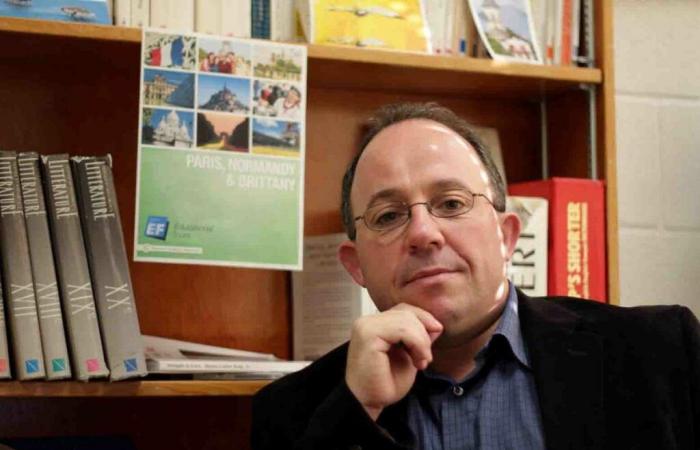PRoughly 7,000 kilometers separate South Carolina (United States), where Éric Touya lives, from the village of Saubusse where he spent his first twenty years with his farming family. A distance which did not prevent the professor of literature at Clemson University from keeping part of his heart and his mind in the town crossed by the Adour.
Returning every summer, Éric Touya has seen the rural territory where he grew up impacted by technological, economic and social developments which have profoundly changed activities and lifestyles. Combining his academic career around literature, ethics and social sciences, with his attachment to the country of his childhood, the academic has just published a work entitled “Thinking about rurality in Aquitaine, Saubusse (1930-2020)” ( 1).
Franco's daughter
“When I hear from Saubusse, I am saddened to learn of the deaths of people I knew, especially those of a certain age. I had the idea of collecting the testimonies of Sibusates, aged 80 or over, and of safeguarding through their stories the intangible heritage of the village made up of individual and collective stories so that their memories do not fade into obscurity. forgotten,” explains Éric Touya.
Éric Touya's work recounts the developments of Saubusse over nearly a century (here rue Saint-Pierre around 1930).
Yvon Loubelle
Through the testimonies, the reader plunges into the life of the village before, during, then after the Second World War, getting to know local figures such as the teacher, the priest, or other Sibusate personalities who remain in the memories.
If we learn a lot about the mentalities and habits and customs of the past, we also smile at certain anecdotes mentioned. So, the big game in 1936 consisted, for the kids of the time, of challenging each other to a race on each side of the bridge railings. It once ended in the Adour for one of the protagonists, fortunately taken in by one of the river's fishermen. We will also learn of the discreet presence of Franco's daughter during the Spanish War, sheltered by the Caudillo.
Reach younger generations
Despite his distance, the author was able to carry out many of the 17 interviews remotely, assisted by Yvon Loubelle, Sibusate, also a history enthusiast. “I tried to identify narrative continuity around several axes: material and intangible heritage, which includes knowledge of the village and memory of the past; the territory through the story of the evolution of agriculture; the study of the economic fabric and neorurality; and the transmission through which the elders demonstrate their commitment to the cultural, religious and associative life of the village,” explains Éric Touya.
The academic intends for his work to reach the hands of young people. “One of the challenges of the book is to help them discover the place they share with those who precede them. This knowledge is crucial for their commitment to the future life of the city. Another ambition of the work is to make people feel the organic link that unites each of us to a village, to its history and its territory. »
(1) Bordeaux University Press 2024






